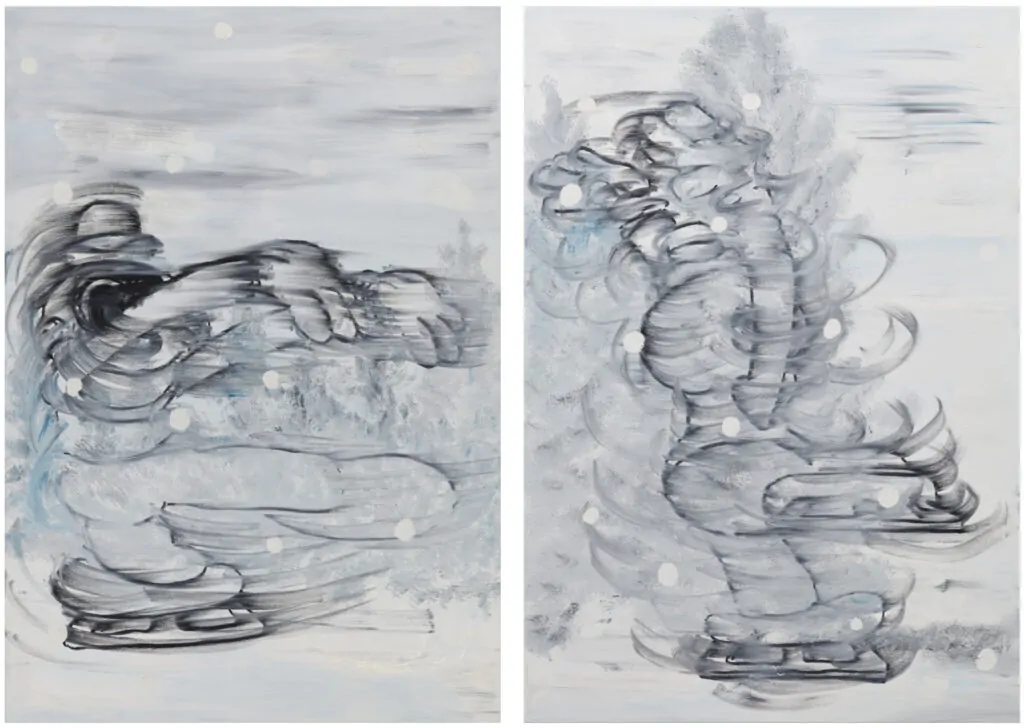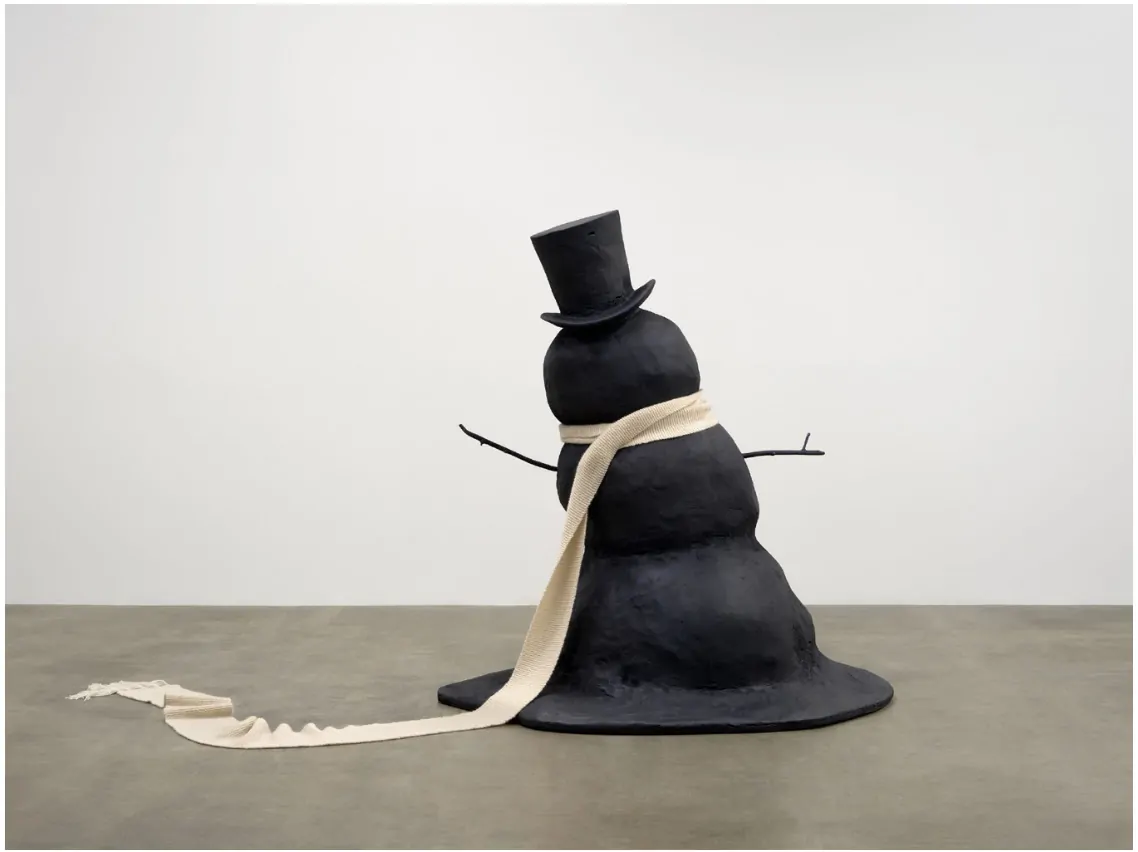Gary Simmons: Thin Ice
2nd November, 2024 – 11th January, 2025
Hauser & Wirth New York
New York
134 Wooster Street
For his first solo presentation with Hauser & Wirth in New York City, Gary Simmons will introduce a new body of work advancing his decades-long exploration into issues that haunt our national psyche––race, representation and collective identity. ‘Thin Ice’ debuts sculpture, paintings and drawings––including a sequence of canvases that isolate and re-purpose archetypal racialized imagery from cartoons of the 1920s and early 1930s, and a site-specific wall drawing referencing one of the most iconic films of the 1960s––to capture the instability and disorientation of the current American moment.

Oil paint on canvas 198.1 x 137.2 cm / 78 x 54 in
Photo: Keith Lubow
Going Through Progressions #3 2024
Oil paint on canvas 198.1 x 137.2 cm / 78 x 54 in
Photo: Keith Lubow
© Gary Simmons Courtesy the artist and Hauser & Wirth
Simmons’ art skates deftly between abstraction and representation via his signature technique of erasure. This formal conceit upends the viewer’s sense of certainty; by degrading familiar icons, he exposes latent meanings and ugly truths lurking just behind the surface of popular imagery. For example, Simmons has consistently used Bosko and Honey, a pair of racist cartoon characters first created in 1928, as avatars of institutionalized racism.
Bosko reappears in ‘Thin Ice’ but with a new and unmistakable urgency. The exhibition opens with a painting that depicts him as a fiddle player frenetically sawing away at his strings. This work signals the start of a performance that will unfold across several successive canvases in which Bosko glides on ice skates to execute a single disjointed pirouette. Together the works achieve the effect of a stop motion film or comic strip. Simmons has blurred the contour lines of Bosko’s whirling figure, an expressive tactic that induces a vicarious sense of dizziness in the viewer.
‘Somewhere, My Love,’ Simmons’ new monumental wall drawing, is his first major site-specific work in New York since his commission for The Drawing Center in 2018. Conceived specifically for this exhibition, it alludes to the unique material history of David Lean’s Academy Award-winning epic ‘Doctor Zhivago’ (1965). Essentially an historical romance, Lean’s classic film recounts the vertiginous mix of idealism, duplicity and dislocation created by the Russian Revolution and subsequent civil war. Simmons’ site-specific work adopts one of the film’s most memorable visuals––a lavishly ice-encrusted palace.
Though its narrative is set in pale, frozen locales during World War I, ‘Doctor Zhivago’ was, in fact, filmed primarily during a winter heat wave in a staged Potemkin village erected near Madrid, Spain, where beeswax and dust from a local marble quarry were repurposed as imitation snow and ice. For Simmons, that feint becomes a stand-in for the artifice and seductive deceit coursing through popular culture and media––and, sometimes, by design, in art itself.

Steel, foam, plywood, polyurethane, and automotive paint
Dimensions variable – Approximately 185.4 x 152.4 x 165.1 cm / 73 x 60 x 65 in
Photo: Keith Lubow Gary Simmons
© Gary Simmons Courtesy the artist and Hauser & Wirth
‘Thin Ice’ will also unveil a set of studies that offer glimpses into Simmons’ associative gestural processes, and a new sculpture replete with its own unique set of conceptual and physical paradoxes. Constructed from steel, foam and polyurethane, and finished with automotive paint, ‘Black Frosty’ (2024) resembles a snowman cast in obsidian or coal, his neck ensnared by a 20-foot-long, noose-like, hand-knit scarf made of white wool, suggesting an underlying violence often masked by civility.
An adjacent large-scale painting depicts a constellation of black stars streaming across a hazy blue and white sky, mirroring the inverted color palette of Simmons’ snowman. Here, the heavens are punctuated by points projecting the absence of light and ‘Black Frosty’ remains frozen in time, forever on the verge of dissolution.
Gary Simmons: Thin Ice opens on the 2nd of November, 2024 until the 11th of January, 2025 at Hauser & Wirth New York
©2024 Gary Simmons, Hauser & Wirth





